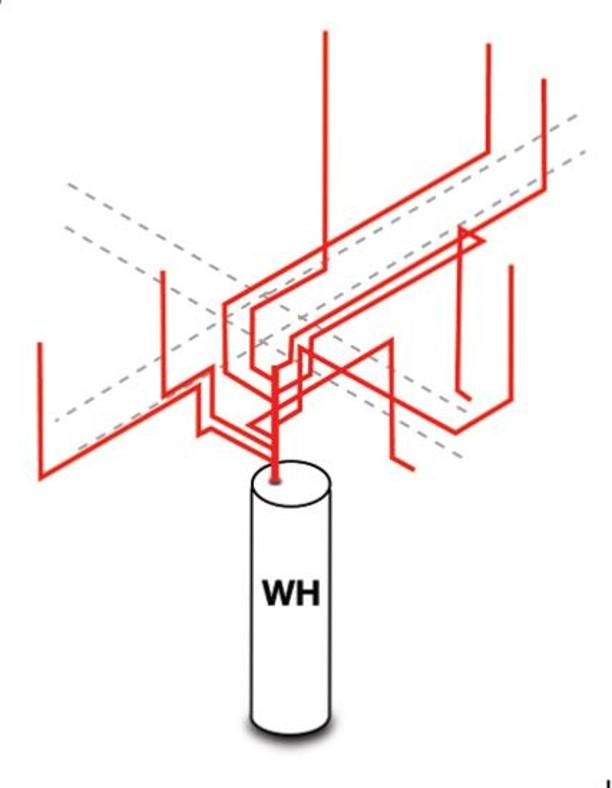
Plumbing
Water Supply Dist Waste Containment Core Manifold
Traditional trunk-and-branch plumbing layouts waste lots of water and time in a single use. To reduce water use and energy losses related to heating water, homes should be designed with plumbing layouts and hot water distribution systems that minimize the amount of time it takes for hot water to get from the water heater to each plumbing fixture. Core and central manifold plumbing strategies have to be considered early in the design process.
With a core plumbing option, hot water is pipes to each fixture and appliance in as direct a path as possible. There may be more than one plumbing core, each with its own water heater supplying nearby plumbing fixtures and appliances. Manifold plumbing uses plastic piping to route all hot water lines directly to each fixture or appliance from a central manifold, which is connected to the water heater. Each appliance or fixture has its own circuit of pipework and is conveniently located and can simply be turned off isolated in the event of a problem. Both of these are time- and water-saving choices when designing or updating plumbing in a home.
Assign a proposed location for all hot water plumbing fixtures and appliances; hot water fixtures be as close to the water heater as possible to minimize heat loss in pipes.
Avoid placing water pipes in exterior walls. Design plumbing trunks and branches to store as little water as possible by running the smallest-diameter code-permitted pipe between the hot water source and each fixture. Install and insulate the plumbing according to the applicable codes.
Calculate the stored volume between each water source and water use point to make sure that no more than 0.5 gallons of water is stored between the water source and the use point.
Document all plumbing design features on a plumbing diagram.